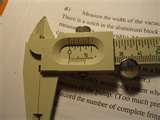The figures below show a car traveling with constant velocity collides with a truck which is initially at rest. The car stuck to truck after the collision and they move together.
Based on the observation,
a) make one suitable inference, [1 mark]
b) state one appropriate hypothesis that could be investigate [1 mark]
c) describe how you would design an experiment to test your hypothesis using an ticker timer, trolleys and other apparatus. In your description, clearly state the followings :
i) aim of the experiment
ii) variables in the experiment
iii) list of apparatus and materials
iv) arrangement of the apparatus
v) the procedures of the experiment, which includes the method of controlling
the manipulated variable and the method of measuring the responding variable.
vi) the way you would tabulate the data
vii) the way you would analyse the data [10 marks]
Answer :
After the collision, the car and the truck move together, so the type of collision is Inelastic Collision
For experiment : Inelastic Collision
a) Inference :
In inelastic collision, the momentum is conserved.
b) Hypothesis:
The total momentum before collision is equal to the total momentum after collision, provided there are no external forces acting on the system
c)
i) Aim of the experiment:
To verify the principle of conservation of momentum in inelastic collision
ii) Variables:
Manipulated: Mass of trolleys
Responding: Final velocities of the trolleys / Momentum of the trolleys
Constant: Surface of runway used
iii) Apparatus/Materials:
Friction-compensated runway, ticker-timer, A.C. power supply, trolleys, wooden block, ticker tape, cellophane tape, plasticine
iv) Arrangement
v) Procedures :
1. The apparatus is set up as shown in the diagram.
2. The runway is adjusted so that it is friction-compensated.
3. Two trolleys of equal mass are selected. Plasticine is fixed to the front end of trolley
4. A ticker tape is attached to trolley A with cellophane tape. The ticker tape is passed through the ticker-timer.
5. The ticker-timer is switched on and trolley A is given a slight push so that it moves down the runway at uniform velocity and collides with trolley B which is stationary.
6. The ticker-timer is switched off when both trolleys reach the end of the runway.
7. The final velocity is determined from the ticker tape.
8. Momentum is calculated using the formula p = mv.
9. The experiment is repeated using different masses of trolleys.
vi) Result
vii)Analysis:
From the above table, it is found that:
Total momentum before collision = Total momentum after collision
Conclusion:
The hypothesis is valid.
____________________________________________________________
If the objects move apart after collision, the type of collision is Elastic collision.
For experiment : Elastic Collision
a) Inference :
In elastic collision, the momentum is conserved.
b) Hypothesis:
The total momentum before collision is equal to the total momentum after collision, provided there are no external forces acting on the system
c)
i) Aim of the experiment:
To verify the principle of conservation of momentum in elastic collision
ii) Variables:
Manipulated: Mass of trolleys
Responding: Final velocities of the trolleys / Momentum of the trolleys
Constant: Surface of runway used
iii) Apparatus/Materials:
Friction-compensated runway, ticker-timer, A.C. power supply, trolleys, wooden block, ticker tape, cellophane tape,spring-loaded piston
iv) Arrangement :
v) Procedures :
1. The apparatus is set up as shown in the diagram.
2. The runway is adjusted so that it is friction-compensated.
3. Two trolleys of equal mass are selected. A spring-loaded piston is fixed to the front end of trolley A.
4. Two pieces of ticker tape are attached to trolleys A and B respectively with cellophane tape. The ticker tapes are separately passed through the same ticker-timer.
5. The ticker-timer is switched on and trolley A is given a slight push so that it moves down the runway at uniform velocity and collides with trolley B which is stationary.
6. The ticker-timer is switched off when both trolleys reach the end of the runway.
7. From the ticker tapes of trolleys A and B, the final velocities are determined.
8. Momentum is calculated using the formula p = mv.
9. The experiment is repeated using different masses of trolleys.
vi) Result :
vii) Analysis :
From the above table, it is found that:
Total momentum before collision = Total momentum after collision
Conclusion:
The hypothesis is valid.
